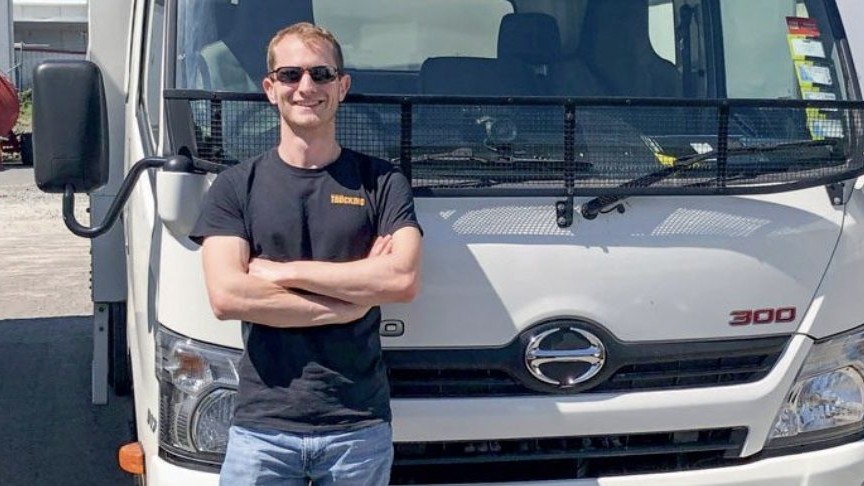
Technology, productivity, labour and education were among the many topics discussed this week at the IRTENZ 18th International Conference, themed Future Highways – Future Vehicles. As ever, the conference was a gathering of some of the brightest local and international minds, who drive vehicle and infrastructural engineering for the transport industry.
If one thing was made clear over the two-and-a-half conference days, it’s that the many challenges facing the industry are not abating. If anything, they’re only growing. It was therefore encouraging to see a fair representation from both Waka Kotahi and the Ministry of Transport in attendance.
IRTENZ president Chris Carr commented: “Productivity remains important but it’s going to come under pressure. The population is increasing and our demand for goods and services is not going to decrease.
“Meanwhile, in February we discovered the word ‘resilience’ – at some point someone forgot about the black stuff we drive on… Waka Kotahi is going to have to take a more cooperative approach as these problems come to a head, including how we deal with heavier vehicles [as the likes of electric trucks become more commonplace].”
In his keynote address, IRTENZ past president and current interim chief executive at Ia Ara Aotearoa Transporting New Zealand Dom Kalasih commented that a lot of the really hard challenges are still coming. “Decarbonisation is a request that we re-industrialise – it’s a change of that level of significance,” he said.
“It is incumbent on our sector to continue advocating a sensible way forward and shift the increasing risk and demands on operators. At the moment, most of the focus on decarbonisation is put on operators, regulators and OEMs – that’s risky, decisions need to be made at a much higher level. As long as road control authorities are mucking around in the weeds, the meaningful conversations are never going to happen. Transport operators can do anything so long as it makes commercial sense, and a lot of the enabling technology is there now, but we can’t do it alone.”
Performance-based standards and HPMVs featured heavily in the conversation around productivity – especially considering the potential impacts around lost time charging electric vehicles and the payload penalties they present. Les Bruzsa, of Australia’s National Heavy Vehicle Regulator, suggested: “Fifteen years ago [with the implementation of PBS] we didn’t have the same environmental concerns. The goals now for the transport sector won’t be reached without productivity improvement, they won’t happen if we reduce productivity.”
On the topic of roads, Waka Kotahi’s Peter Brown worryingly suggested that 10% of New Zealand’s network is ‘broken’ and needs to be rebuilt. Encouragingly, he also said that an extra $500 million has been allocated to rehabilitations year on year. “We’re aware issues exist. We’re engaging with funders on whole of life cost – getting them to understand spending more now means spending less later.”
Operators should also be aware that policing of heavy vehicles is also changing. Inspector Scott Richardson, CVST national deployment manager, explained that Commercial Vehicle Safety Centres will dramatically change how the police operate, with a dramatic increase of staffing in the truck space. “New computer systems will enable us to flag trucks so officers don’t waste their time inspecting compliant vehicles. We’ve set a target of maintaining 50,000 commercial vehicle inspections a year.”
Finally, the industry’s need for future skills and workforce capacity was in the spotlight. While in recent times it’s been up to individual entities to attract and train school leavers, it was encouraging to hear from Engineering New Zealand and Hanga Aro Rau Manufacturing, Engineering and Logistics Workforce Development Council, that there is a push to respond to industry needs and provide training and qualifications that reflect that.
“The labour shortage within the logistics industry is expected to grow from 4700 to 18,000 by 2028 without immediate intervention. We’re competing with the world and other industries to attract and retain staff,” commented Phil Alexander-Crawford of Hanga Aro Rau.
While these are some of the key points from the conference this year, they are but a snapshot of the many in-depth conversations that took place. Keep an eye on the December 2023/January 2024 issue of New Zealand Trucking magazine, for the first of multiple detailed reports from the 2023 IRTENZ conference.
Take care out there,
Gavin Myers
Editor
Read more
It’s Wanaka weekend!
0 Comments2 Minutes
Passing on passing
0 Comments6 Minutes



